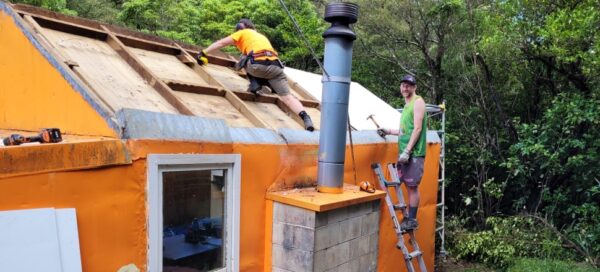From Newsroom.co.nz. By Peter Wilson (Peter Wilson is a former President of Federated Mountain Clubs of New Zealand, and former Department of Conservation statutory planner)

ENVIRONMENT
The Department of Conservation needs to talk with the outdoor community who want to roll up their sleeves and help or there’ll be a fight to defend some of our greatest assets from the very organisation charged with protecting them
Opinion: The New Zealand backcountry is for many of us the place of our adventures, ambitions, and the backdrop and stage to our most poignant memories. It contains more than 900 huts and thousands of kilometres of tracks which have built up since people were walking through the landscape.
For the most part, they reflect who we are. Simple, rugged structures that withstand the elements, and have proven to be remarkably resilient. Many people have the not unreasonable view that our hut and track network is the best in the world, that it is at the core of our identity.
READ MORE:
* Crisis-hit Conservation Dept considers closures, offloads
* What’s up with the tracks, DoC?
* DoC forced to slash budgets in funding ‘crisis’
However, despite its core place in our national psyche, huts and tracks have never had an easy fit with the Crown accounts. This issue, dating back nearly 40 years, is now in sharp focus with the news that the Department of Conservation has a $300 million backlog of maintenance, with suggestions that huts and tracks may be divested, closed, or removed entirely.
If DoC rangers want to replace a hut roof in their day jobs, to conserve a facility, then DoC gets additional capital charges for doing what most people see as a maintenance job
Accounting has a tough time quantifying the importance of this network to heritage, culture and the use value for important biodiversity work – values that don’t easily translate to an Excel spreadsheet.
DoC currently subjects itself to a perverse set of rules for huts and tracks – a triple whammy. First, it is charged by Treasury a capital asset charge of about 7 percent interest a year for just having the huts and other structures, such as boardwalks and bridges, on its books. Then it gets charged depreciation, on structures that are in many cases over 50 years old. Finally, any maintenance or upgrades on huts and tracks often results in a revaluation, whereby DoC receive additional capital asset charges and the cycle starts again.
The absurd accounting scenario exists that if DoC rangers want to replace a hut roof in their day jobs, to conserve a facility, then DoC gets additional capital charges for doing what most people see as a maintenance job.
DoC’s own internal systems, many of which are significantly more stringent than the legal building or engineering codes, make it worse. Its own asset management system records compliance issues, but in many cases the focus can be on urgent safety issues and the routine maintenance has just built up over time to levels that are difficult to manage.
Rather than coming up with a workable maintenance plan, these inspection results get fed into a cumbersome planning and decision loop that often results in very little work being done to fix the identified problems. A hut can sit with a broken window for 10 years, to the point where the frame rots from moisture, simply because the army of planners and ‘integration’ managers in Wellington will not approve maintenance expenditure on remote huts that get limited use.
For DoC, limited use means anything that doesn’t have seven nights a week occupancy. In other words, anything that is used by Kiwis on their weekends. This approach misses the bigger picture and the wider value to the New Zealand community.
The common refrain of conservationists that if only we give DoC more money, doesn’t help. It should be obvious that the more money that goes to ineffectual systems, the less effective they become. Since 2017, DoC has added 800 staff, and far less work is happening in the field.
Vote Conservation allocates DoC a recreation and heritage budget of over $200m a year, and this needs to stretch across everything from managing the concessions role of DoC to getting the work done on the ground. Some of these things, such as front country tourism sites and Great Walks, are expensive so it does mean DoC needs to work smart to manage the complete set of responsibilities that New Zealand taxpayers expect.
However, there are solutions:
Over the past 10 years, a phenomenal effort by volunteers, supported by regional DoC staff and trade contractors, has resulted in the resolution of a substantial proportion of the maintenance backlog on huts. More than 280 huts and 1500km of track have received maintenance, some for the first time in 30 years, involving 900 volunteers and support from the remaining regional DoC staff and contractors.
Read full article: https://www.newsroom.co.nz/doc-will-get-back-on-track-when-perverse-rules-are-ditched

DOC has a low rating with rural and outdoors folk I talk to. I think the culture is wrong. Perhaps a review and a reordering of priorities is needed?
The tracks were well maintained in the 50’and 60,s but now they cannot do it. I will tell you why they cannot do it now and that is too much is spent on the likes of 1080 and office dwellers. Boots on the ground is what is needed and encouraging school groups and the likes to help out.